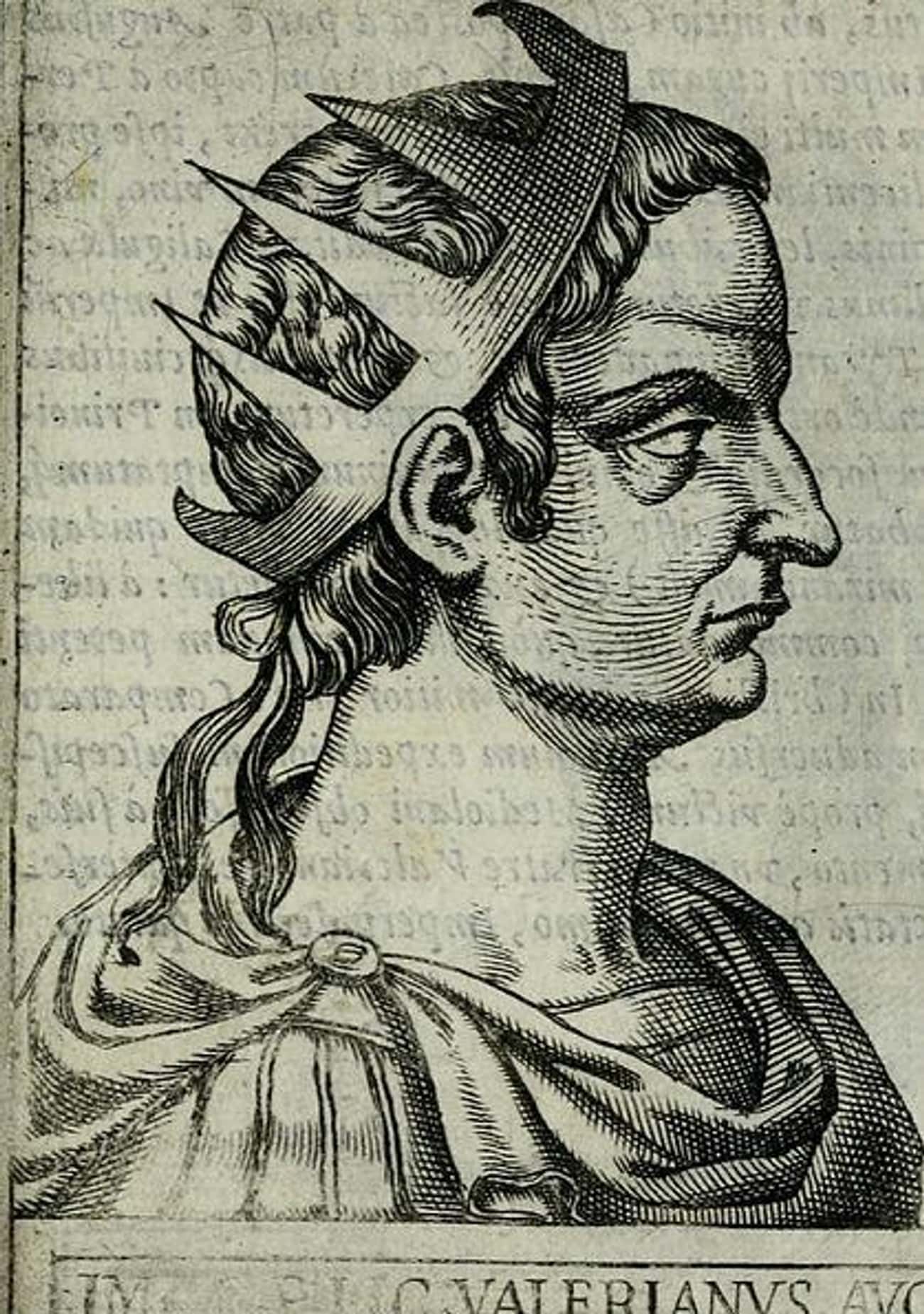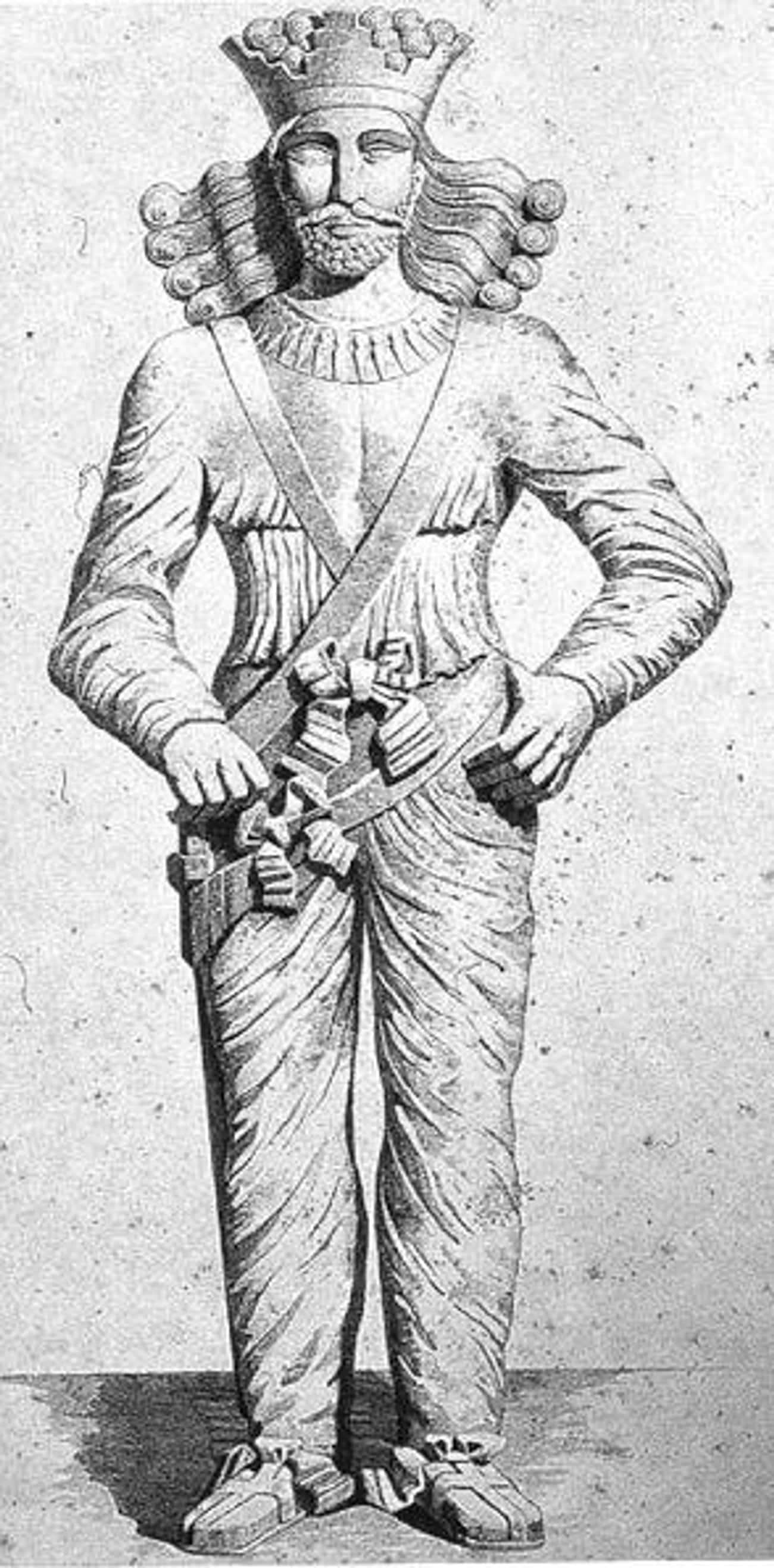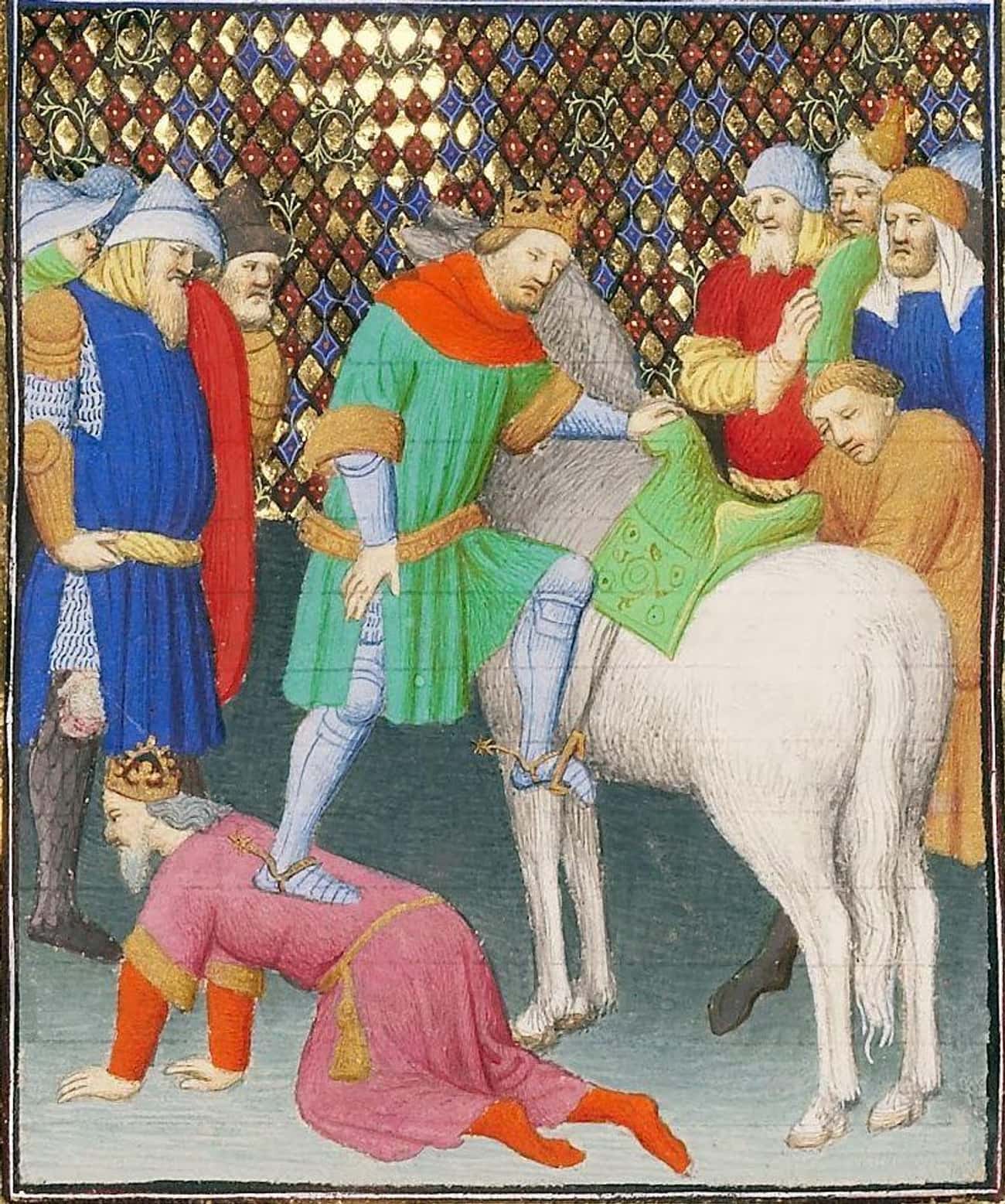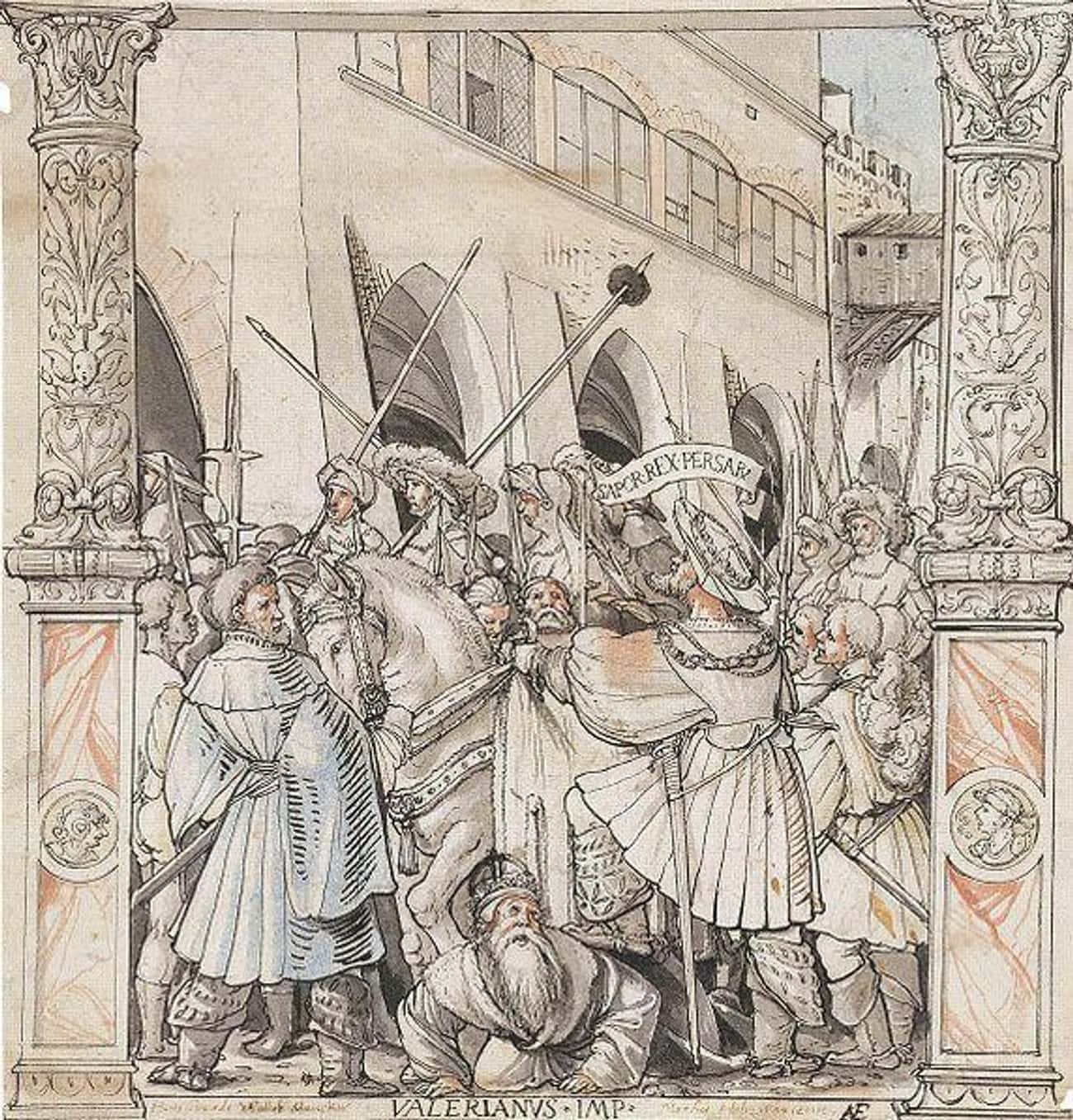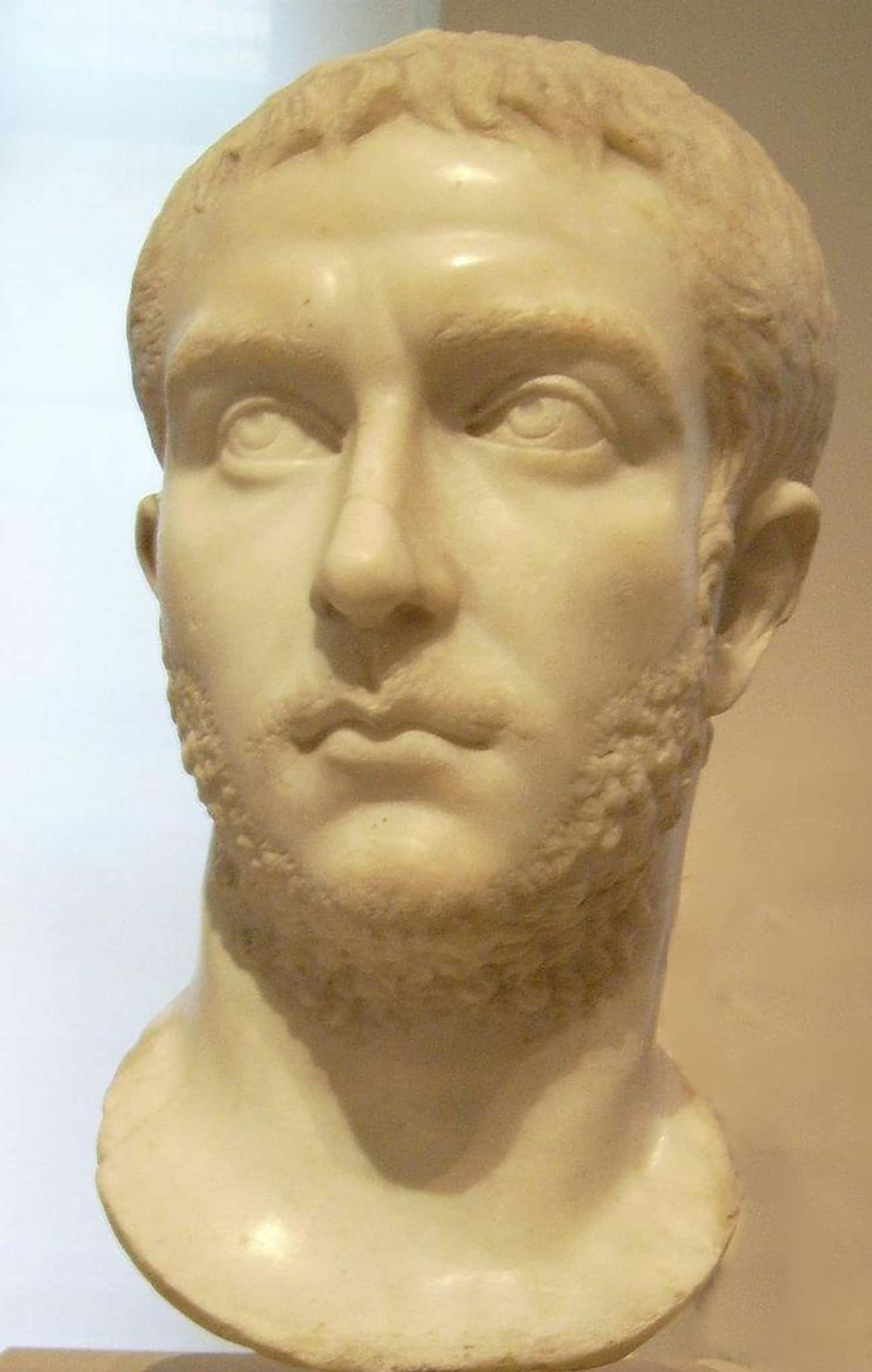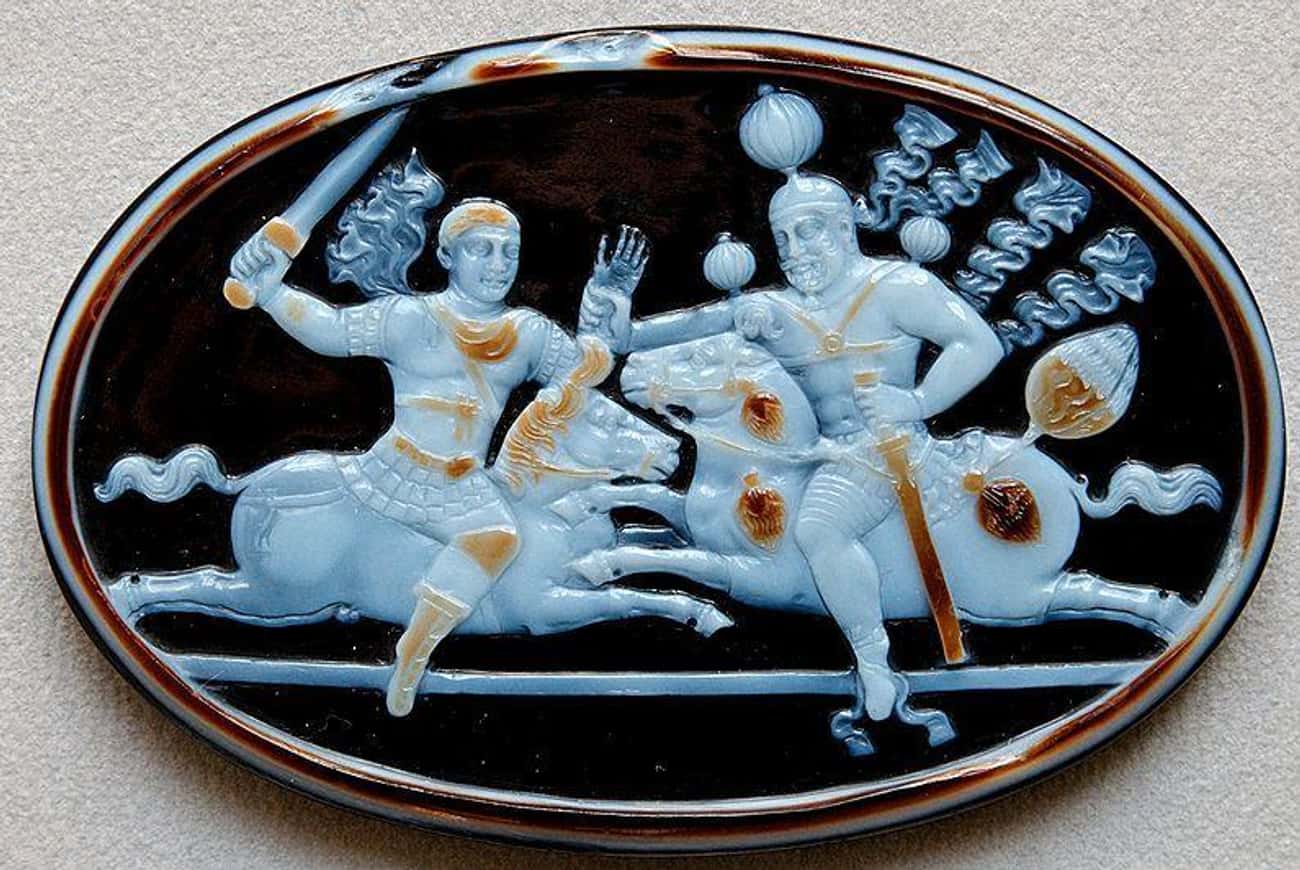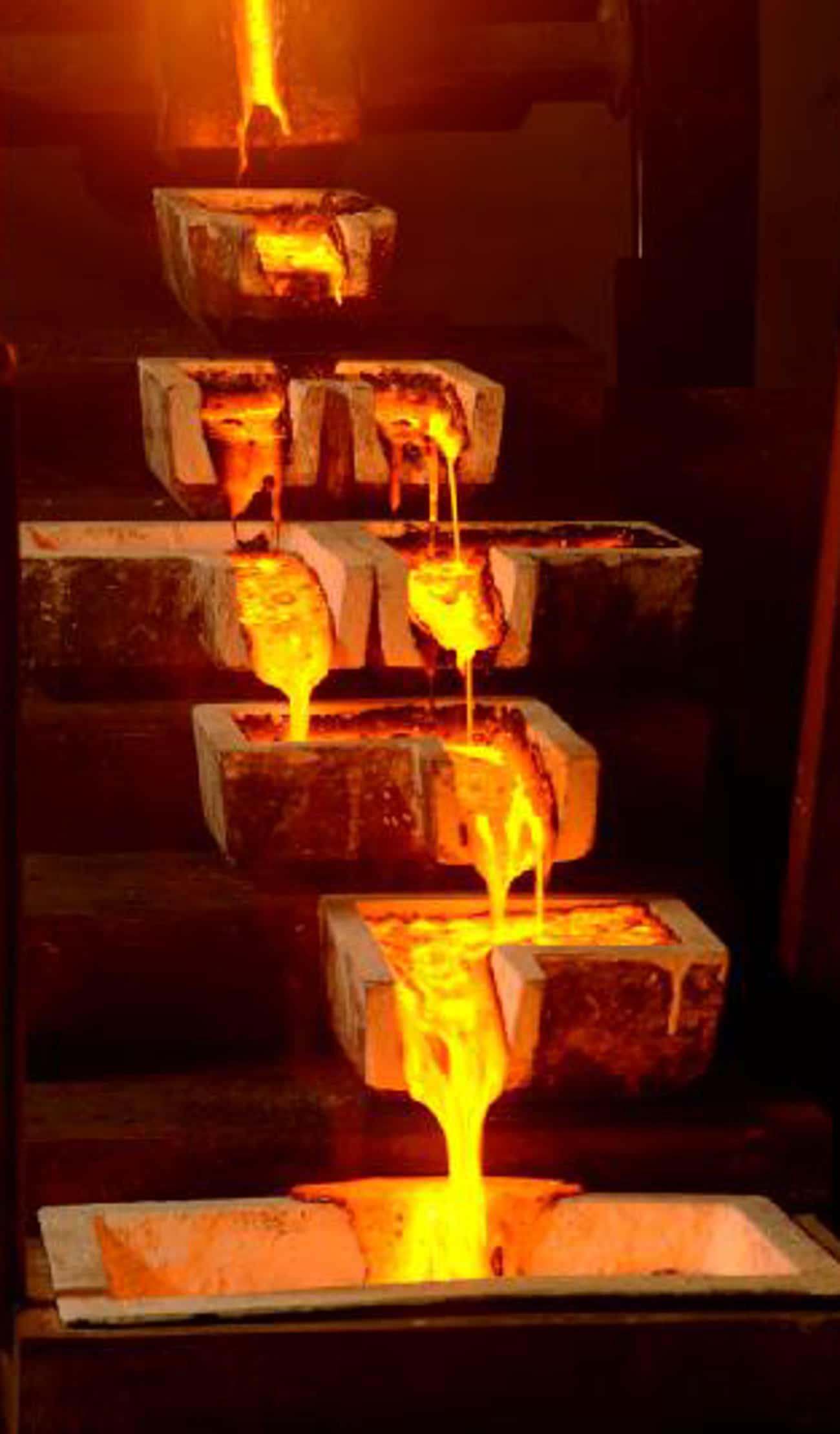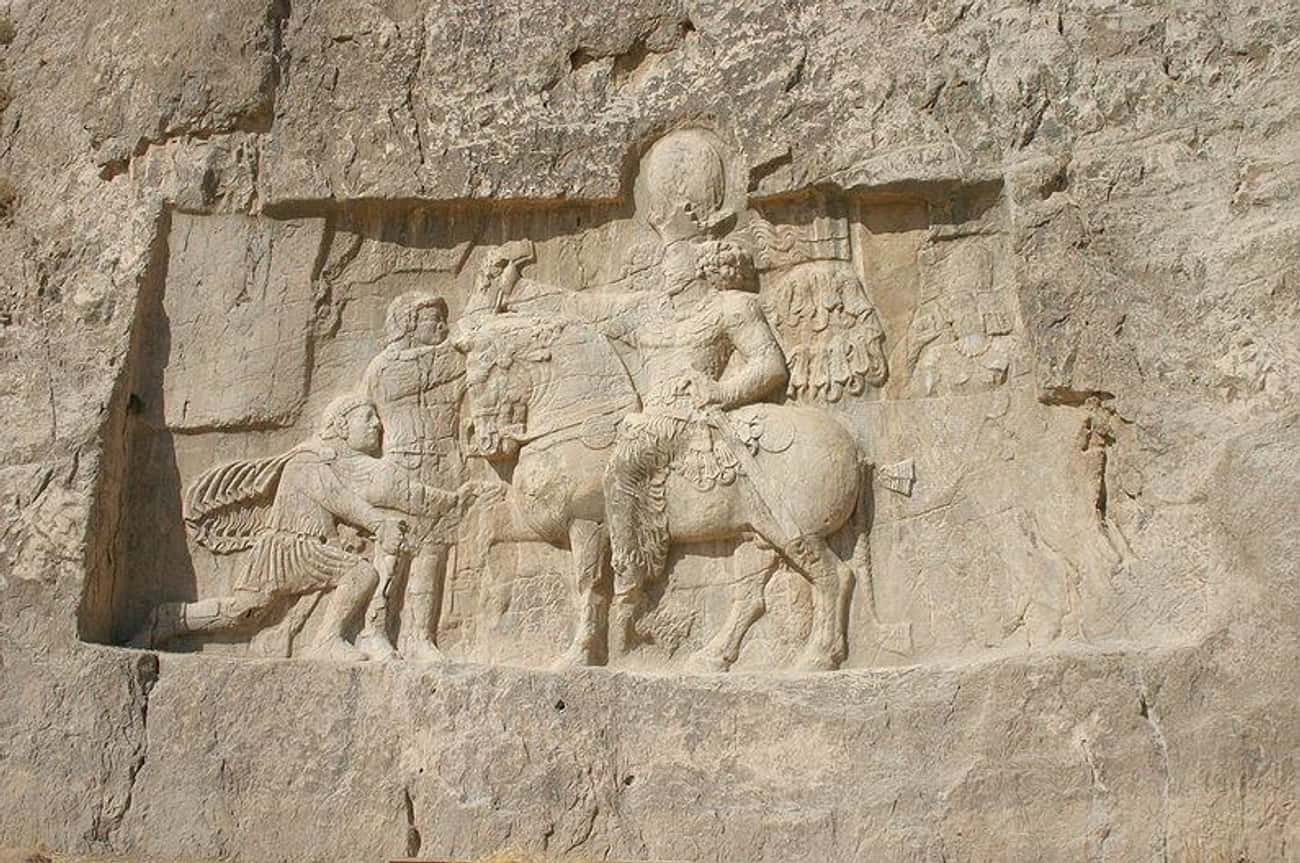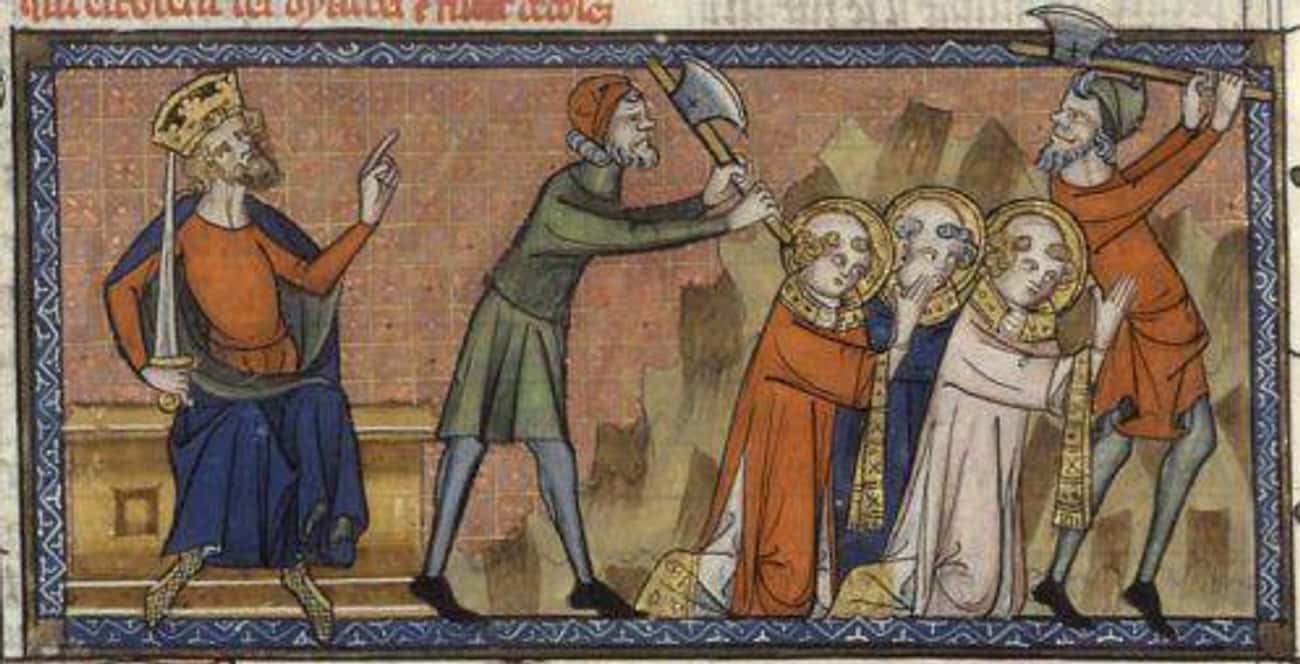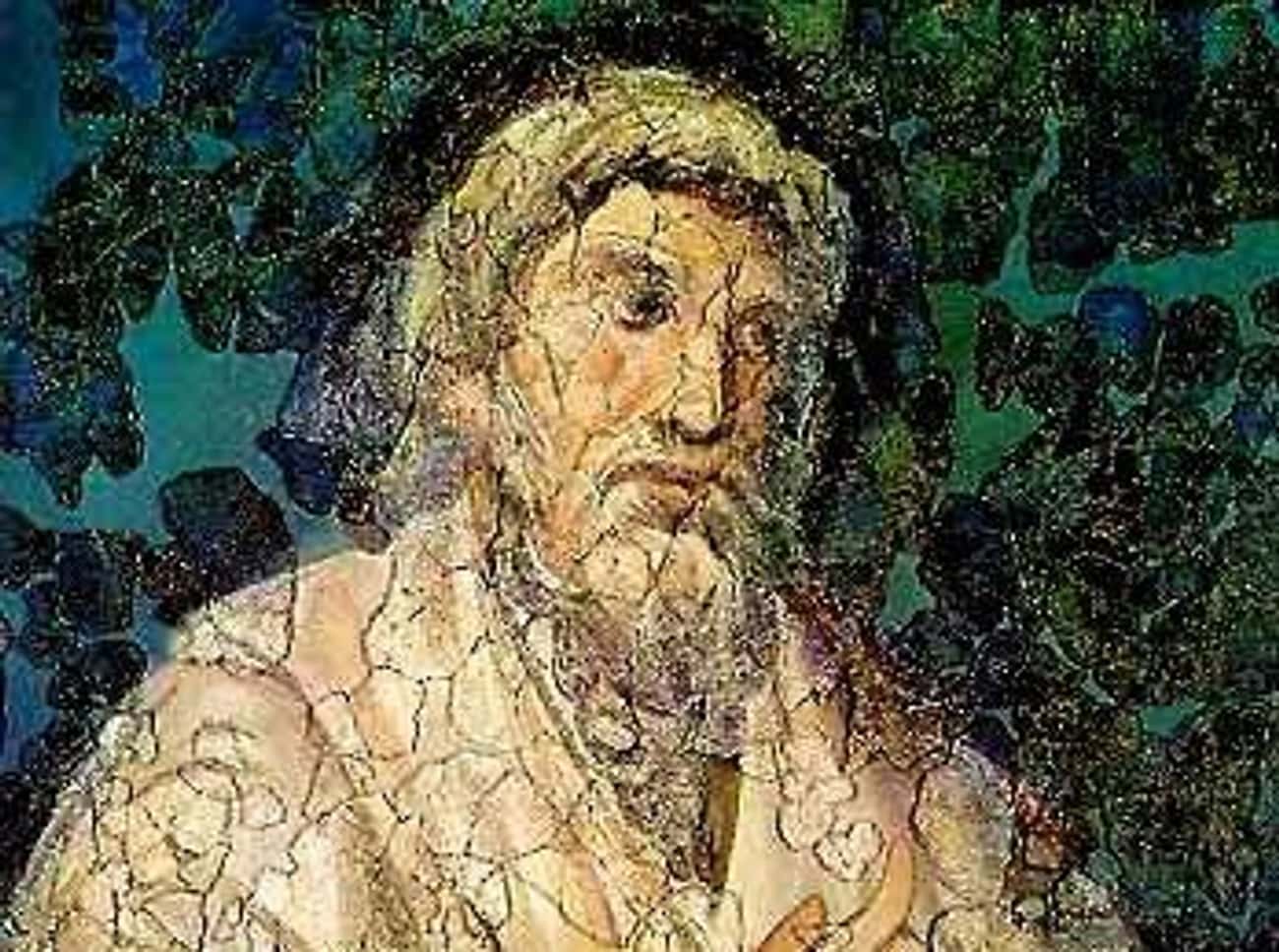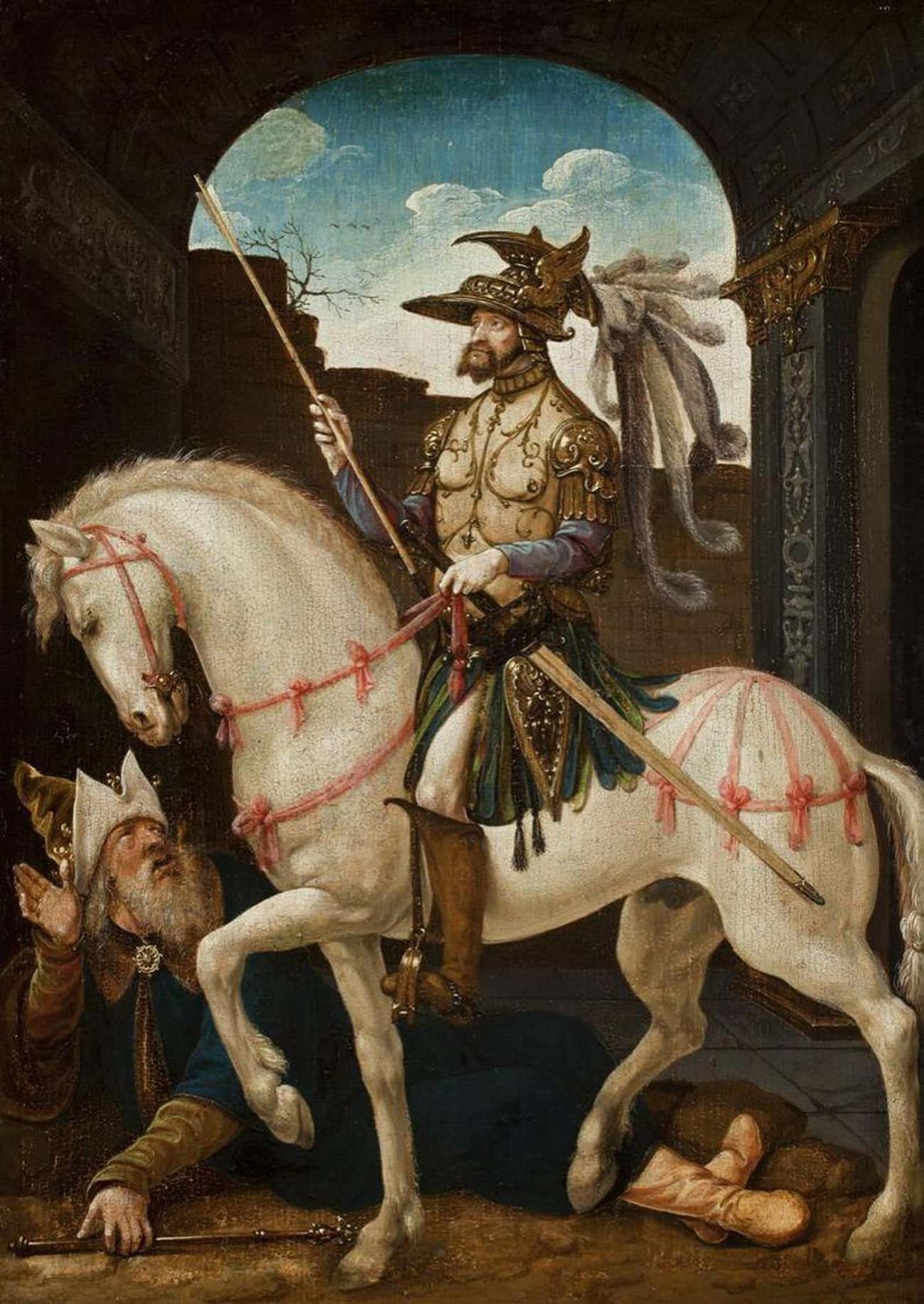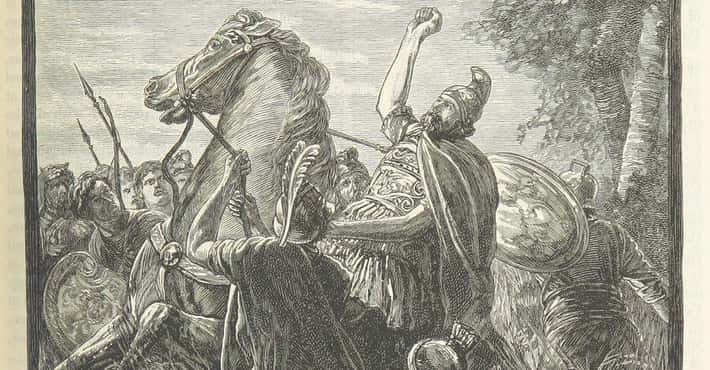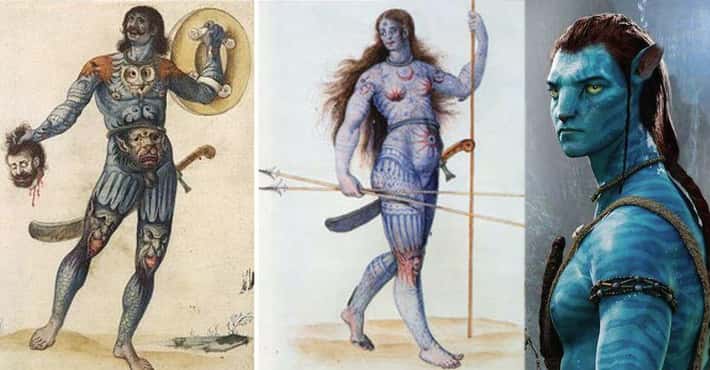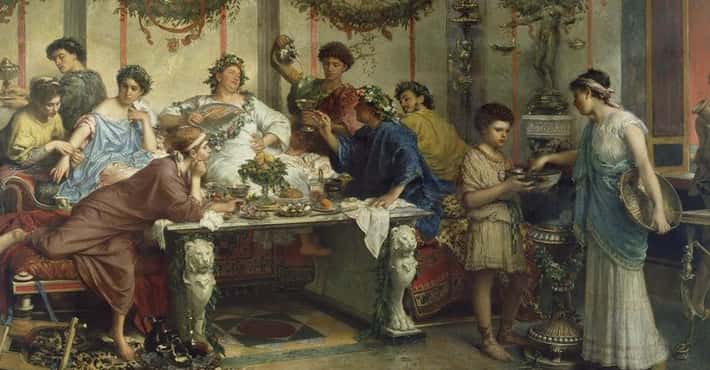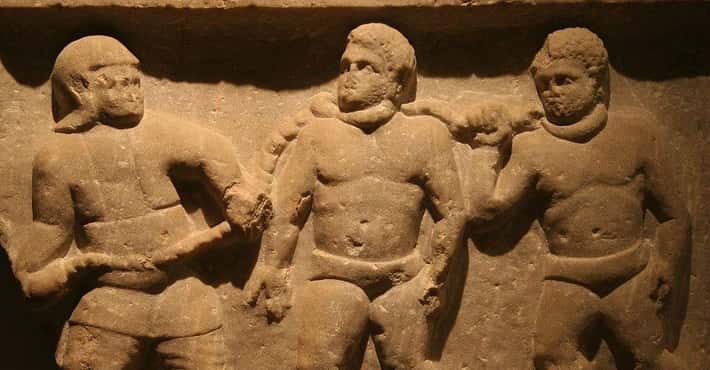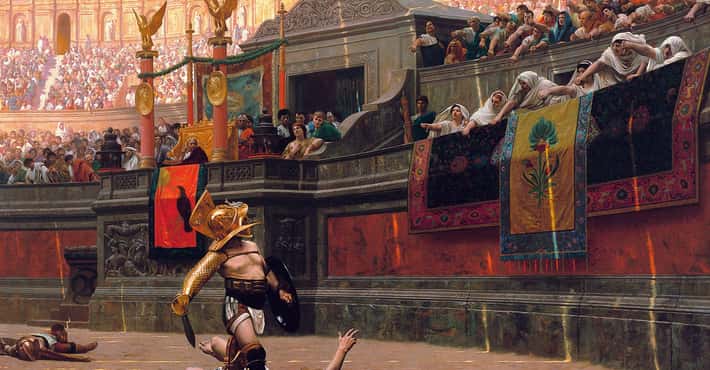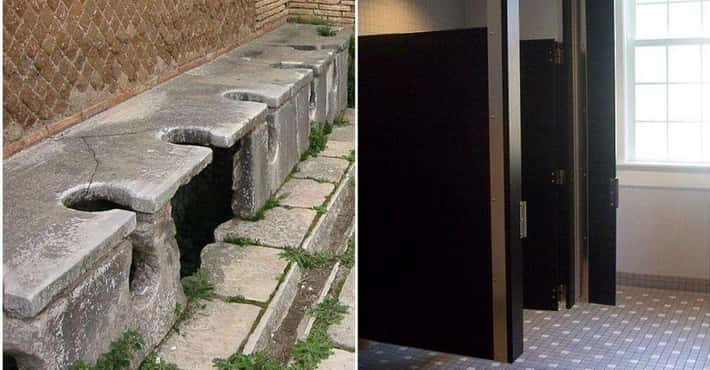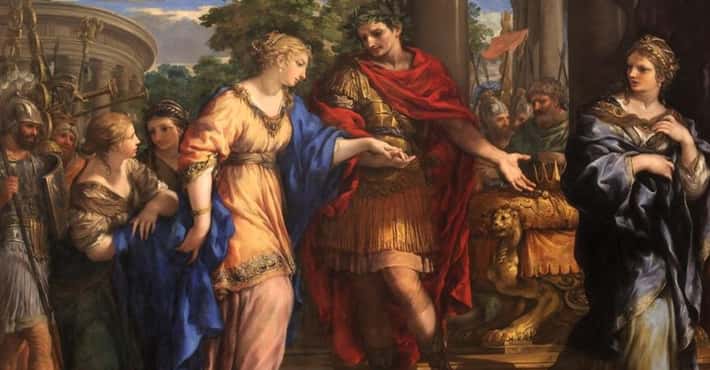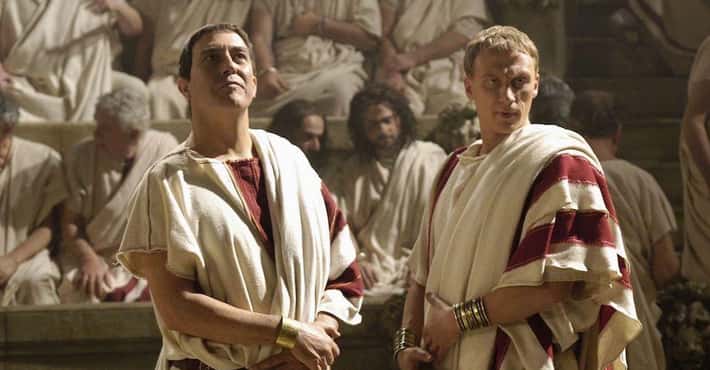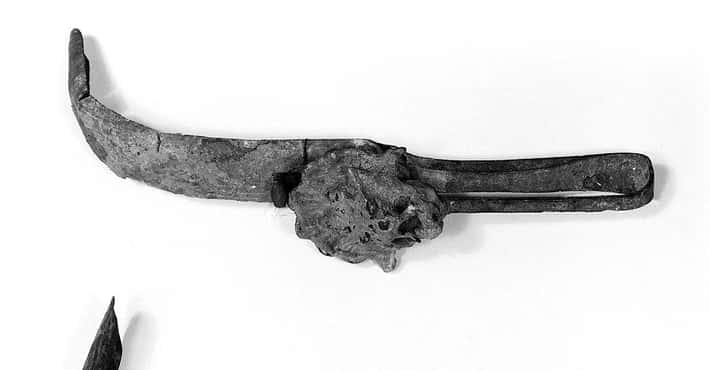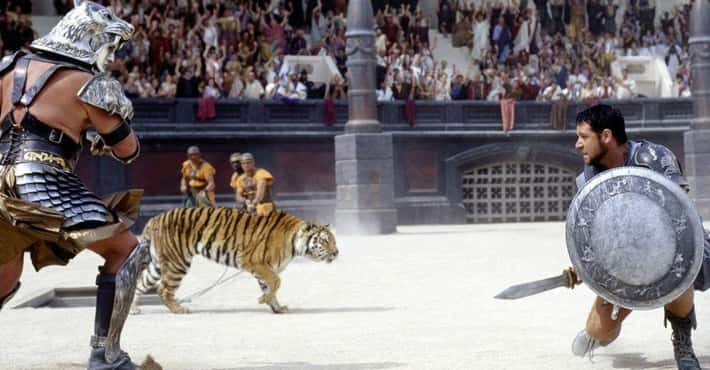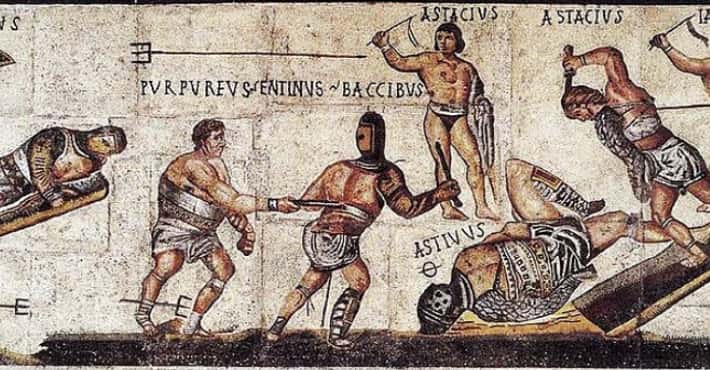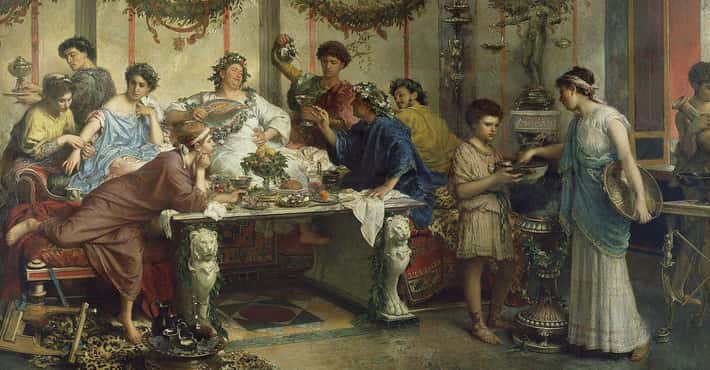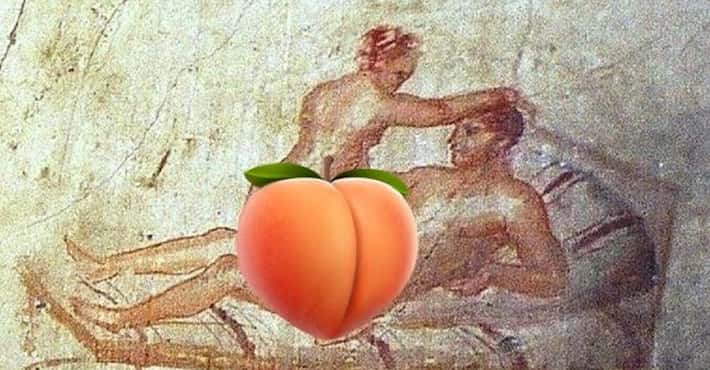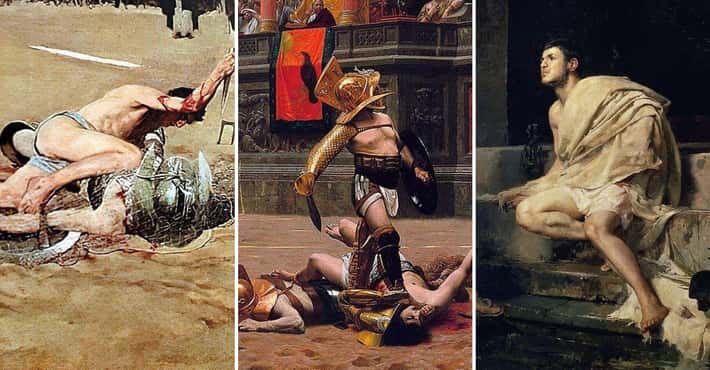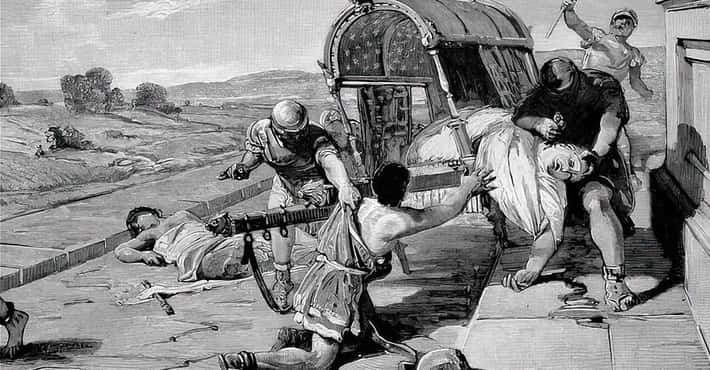The Roman Emperor Who Might Have Died By Having Molten Gold Poured Down His Throat
- Photo: Giovanni Battista Cavalieri / Wikimedia Commons / Public Domain
Valerian Came To Power When Being Emperor Was A Death Sentence
When Valerian became emperor in 253, Rome was in the middle of the Crisis of the Third Century. In a period of only 50 years, the empire would boast a staggering total of nearly 50 different emperors. Many emperors only lasted a few months, assassinated by rivals or even their own troops. As historian Pat Southern put it, “To be declared emperor once marked the apogee of a man's career. In the third century it was a death sentence.”
Valerian’s seven years of rule might seem like a success – until he was captured by Rome’s greatest enemy, the Persians.
- Photo: Unknown / Wikimedia Commons / Public Domain
Persian King Shapur I Beat Three Roman Emperors
Valerian’s rival was King Shapur I of Persia. As Rome attempted to expand in the Middle East, Shapur pushed them back, first killing Roman emperor Gordian III at the Battle of Misiche and then defeating his successor to capture the city of Antioch.
But Shapur’s greatest victory came in 260 when he captured emperor Valerian at the Battle of Edessa.
- Photo: Unknown / Wikimedia Commons / Public Domain
Valerian Became A Human Footstool For King Shapur
Lactantius, an early Christian writer who was 20 when Valerian died, wrote a description of the emperor’s treatment at the hands of the Persians. After his capture, Valerian “wasted the remainder of his days in the vilest condition of slavery,” Lactantius reported.
Lactantius wrote that King Shapur even humiliated Valerian by using him as a human footstool. “The king of the Persians, who had made him prisoner, whenever he chose to get into his carriage or to mount on horseback, commanded the Roman to stoop and present his back.”
- Photo: Hans Holbein / Wikimedia Commons / Public Domain
According To Lactantius, King Shapur Really Rubbed In The Whole Footstool Thing
Shapur did more than just step on Valerian’s back. According to Lactantius, every time the king trod on the emperor, he smiled and said, “This is true, and not what the Romans delineate on board or plaster,” mocking the emperor’s fall from power.
The Romans weren't about to carve a statue of Valerian’s humiliation, but Valerian became a popular subject in Persian and European art for centuries after the emperor’s death. In the 16th century, over 1,000 years later, Hans Holbein was still drawing the Roman with a Persian king’s foot on his back.
- Photo: Marcus Cyron / Wikimedia Commons / Creative Commons Attribution-Share Alike 3.0 Unported
Valerian’s Son Didn’t Even Try To Rescue His Father
During Valerian’s humiliation, his son Gallienus ruled Rome. But Gallienus was so weak that he never attempted to rescue his own father. Instead, Gallienus had his hands full trying to suppress a revolt in Rome’s western provinces, where a rival, Postumus, had declared himself Emperor of the Gallic Empire.
Lactantius didn’t buy Gallienus’s excuse, though. He paints a picture of a despondent Valerian, lamenting his “abject and servile state,” and then Lactantius turns the knife: “neither indeed was he ever demanded back.” Apparently Gallienus was too busy to write a letter to Shapur. Or he was too embarrassed about his father's purported footstool status.
- Photo: Marie-Lan Nguyen / Wikimedia Commons / Creative Commons Attribution 2.5 Generic
Instead Of Killing Valerian, Shapur Tormented And Insulted Him
The Persians made cameos to celebrate Valerian’s humiliation, showing the emperor helpless against Shapur, who is able to subdue and capture the Roman by simply grabbing his arm.
During the Roman emperor's captivity, Shapur could have executed Valerian at any time. And, according to some historians, this is likely exactly what happened. Lactantius, however, claimed that the king wanted to ensure “that the Roman name remained long the scoff and derision of the barbarians.” As a result, Shapur subjected the humiliated emperor to a barrage of insults.
- Photo: Iamgold / Wikimedia Commons / Creative Commons Attribution-Share Alike 3.0 Unported
Valerian’s Grisly Execution Was A Real-Life Game Of Thrones Gold Killing
It doesn’t get much worse than having molten gold poured over your head, as season one of Game of Thrones proved. Except if the gold is poured down your throat. That might've been exactly what happened to Valerian when King Shapur got tired of insulting him.
What exactly happens when molten gold is forced down your throat? It can rupture your organs, burn your lungs, and choke you. When modern investigators recreated the death using molten lead (gold is pretty expensive), within 10 seconds, it had congealed and filled the entire throat.
- Photo: Unknown / Wikimedia Commons / Public Domain
Or Was Valerian Flayed Alive And His Skin Dyed Red?
According to an alternate cause of death postulated by Lactantius, Valerian was flayed alive, and “his skin, stripped from the flesh, was dyed with vermilion, and placed in the temple of the gods of the barbarians.” His flayed skin was stuffed with straw and Valerian was preserved in taxidermied form.
Valerian’s stuffed, red corpse stood as a symbol of Persian triumph and a reminder to the Romans to not be too confident about their strength.
- Photo: Ali Ganjei / Wikimedia Commons / Public Domain
The Persians Loved The Story So Much That They Carved It Into A Mountain
King Shapur’s triumph over Valerian was carved into the rocks at Naqš-e Rustam, in Fars, Iran. The relief shows two of the Roman emperors who Shapur humiliated. In the image, the king seizes Valerian with his bare hands, while a second Roman emperor, Philip, bows to Shapur. According to Persian legend, Philip owed his throne to the Persians after paying them a ransom to let him return to Rome.
The relief made the Romans look weak and feeble compared to the mighty Persian king.
- Photo: Richard de Montbaston / Wikimedia Commons / Public Domain
Lactantius Might Have Made The Whole Death Story Up – Because Valerian Persecuted Christians
Lactantius had his own reasons for not liking Valerian. As emperor, Valerian gleefully persecuted Christians, executing bishops and priests and sending others off in chains as forced laborers. He martyred two future saints, Pope Sixtus II and St. Lawrence of Rome.
Lactantius may have exaggerated his tales of Valerian’s torture to further shame the emperor and to demonstrate that those who persecute Christians get what is coming to them. His book was titled The Manner in which the Persecutors Died, after all. And he wrote, “God punished [Valerian] in a new and extraordinary manner, that it might be a lesson to future ages that the adversaries of Heaven always receive the just recompense of their iniquities.”
- Photo: Unknown / Wikimedia Commons/Public Domain
Lactantius's Account Appealed To Those With Anti-Persian Sentiments
Many historians posit the idea that it served Lactantius to write an account of Valerian meeting an ungodly, gruesome end. After all, Lactantius was a staunch early Christian, and Valerian was ruthless in his persecution of believers in Christ. Lactantius's contemporaries might have adopted his story so readily because it served a different end: to paint Persia as barbarically as possible.
In the long conflict between Rome and Persia, propagandists were motivated to treat whatever side they weren't on as the epitome of wickedness. Roman writers, hearing Lactantius's version of what happened to Valerian, might have also added to and spread the story. And from there, a gruesome legend was born.
- Photo: Unknown / Wikimedia Commons / Public Domain
Bottom Line: Valerian Was Not Treated Nicely By The Persians
Even if Lactantius exaggerated, the Persians definitely didn’t treat Valerian like an honored guest – they imprisoned and executed him, after all. And the Romans were known for their own gruesome forms of torture, including crucifixion and throwing people to wild animals.
King Shapur’s reign turned Persia into a superpower on par with Rome. After Valerian’s grisly death, his son was assassinated by his own troops. In the middle of the third century, over a dozen Roman emperors were murdered or died in battle.


